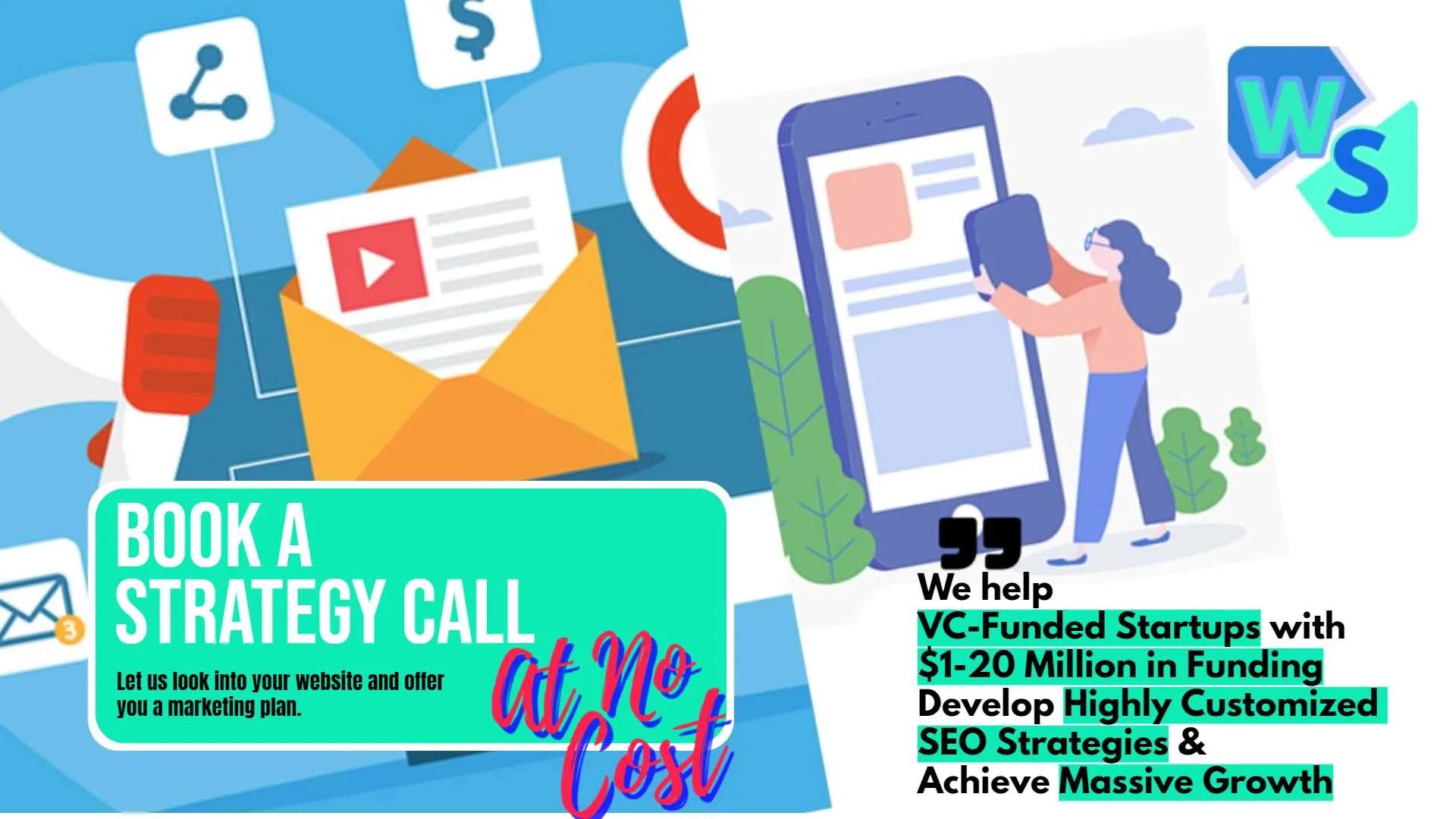In the fast-paced world of digital marketing, email remains one of the most cost-effective tools for acquiring new customers and keeping existing ones engaged. It’s personal, direct, and measurable—qualities that make it a favorite for businesses of all sizes. With a well-crafted email marketing strategy, you can build meaningful relationships, drive conversions, and achieve remarkable results without breaking the bank.
But here’s the secret: it’s not just about sending emails. It’s about sending the right emails to the right people at the right time. In this guide, we’ll break down how you can use email marketing to acquire and retain customers efficiently, while staying within a tight budget.
Step 1: Build a Quality Email List
Focus on Permission-Based Marketing
The foundation of a successful email marketing campaign is a high-quality list of subscribers who actually want to hear from you. Avoid buying email lists—it’s not just ineffective but can also damage your reputation. Instead, focus on building an organic list through permission-based methods.
For example, you can add a simple sign-up form on your website offering something valuable in return, such as a discount code, free guide, or exclusive content. By giving people a reason to subscribe, you ensure they’re genuinely interested in your brand.
Every email address on your list represents someone who’s already engaged, making it far easier to convert them into customers.
Leverage Existing Touchpoints
Your email list doesn’t have to start from scratch. Look at your existing touchpoints—your website, social media channels, and physical locations—to capture leads. For instance, add a pop-up on your homepage inviting visitors to join your newsletter, or include an email sign-up option at checkout.
For brick-and-mortar businesses, collect emails in-store with a tablet or a simple sign-up sheet. The key is to make the process quick and seamless while emphasizing the benefits of subscribing.
The more integrated your approach, the faster your email list will grow.
Step 2: Craft Personalized and Relevant Content

Segment Your Audience
Not all subscribers are the same. Some might be first-time visitors, while others are loyal customers. Segmenting your email list allows you to tailor your messages to each group’s unique needs and interests.
For example, a clothing retailer could create separate campaigns for new subscribers showcasing popular items and for returning customers featuring loyalty rewards. Segmentation ensures your emails feel personal, which increases engagement and drives results.
By understanding who your subscribers are, you can create content that resonates, rather than generic emails that get ignored.
Write Emails That Speak to Your Audience
Email marketing is personal by nature, so your tone should reflect that. Speak to your subscribers like you would a friend—be conversational, helpful, and direct. Avoid jargon or overly formal language that might feel impersonal.
For instance, instead of saying, “We are pleased to announce our new product line,” try something like, “We’re excited to share our latest collection with you—it’s made just for people like you!” Small changes like this make your emails feel more relatable and engaging.
Your goal is to make your subscribers feel like they’re part of an exclusive club, not just another name on a list.
Step 3: Design Emails That Drive Action
Keep Your Design Simple and Focused
In email marketing, less is more. A clean, visually appealing design ensures your message gets across without distractions. Use a clear hierarchy with a single focal point—whether it’s an image, a headline, or a call-to-action (CTA).
For example, if you’re promoting a sale, include one bold headline like “30% Off This Weekend Only,” a striking image of your product, and a single CTA button that says, “Shop the Sale.” Avoid cramming multiple offers or too much text into one email, as it can overwhelm your readers.
Simplicity not only improves readability but also increases the chances of conversion.
Use Strong Call-to-Actions (CTAs)
Every email you send should have a clear purpose and a single, compelling CTA. Whether it’s to shop, sign up, or learn more, your CTA should be easy to spot and hard to resist.
For instance, a travel agency promoting a limited-time deal might use a CTA like, “Book Your Dream Vacation Now.” The key is to create a sense of urgency or excitement that encourages immediate action.
Position your CTA prominently, and make sure it stands out visually to guide readers effortlessly toward the next step.
Step 4: Automate Your Campaigns for Efficiency

Set Up Welcome Emails
First impressions matter, and a welcome email is your chance to make a great one. Automated welcome emails are triggered as soon as someone subscribes, setting the tone for your relationship.
For example, a welcome email could thank the subscriber for joining, highlight what they can expect, and offer a special incentive like 10% off their first purchase. This not only builds goodwill but also encourages immediate engagement.
Welcome emails have some of the highest open rates, making them a powerful tool for starting strong connections with new subscribers.
Use Drip Campaigns to Nurture Leads
Drip campaigns are a series of automated emails designed to guide subscribers through the buyer’s journey. For example, if someone signs up for a free trial of your software, a drip campaign could include:
- A welcome email with setup instructions.
- A follow-up email showcasing key features.
- A reminder email with success stories or testimonials.
- A final email offering an exclusive discount for paid plans.
Drip campaigns allow you to nurture leads over time without manual effort, ensuring consistent and relevant communication.
Step 5: Retain Customers with Value-Driven Emails
Celebrate Milestones and Events
Retention is just as important as acquisition, and email marketing is the perfect tool for keeping customers engaged. Celebrate milestones like anniversaries, birthdays, or the completion of a purchase journey with personalized emails.
For instance, send a birthday email offering a special discount or a freebie. Not only does this make your customers feel valued, but it also encourages repeat business.
Milestone emails show your customers that you care about them as individuals, strengthening their loyalty to your brand.
Provide Exclusive Content and Offers
Make your email subscribers feel special by offering them exclusive perks. This could include early access to new products, members-only discounts, or insider updates about your business.
For example, an online store might send a “VIP Early Access” email to subscribers, allowing them to shop a sale 24 hours before the general public. These exclusive touches make your subscribers feel appreciated and encourage them to stay engaged.
By delivering value consistently, you turn one-time buyers into loyal customers who look forward to your emails.

Related: Check out our free tools:

Step 6: Measure, Optimize, and Grow
Track Key Metrics
To ensure your email marketing strategy is effective, monitor key performance indicators (KPIs) such as open rates, click-through rates (CTR), and conversions. These metrics give you insights into what’s working and what needs improvement.
For example, if your open rates are low, consider testing new subject lines. If your CTR is underwhelming, experiment with different CTAs or visuals. Regular analysis helps you make data-driven decisions that improve your campaigns.
Use tools like Mailchimp, HubSpot, or Klaviyo to track your performance and gather actionable insights.
Test and Refine
Email marketing thrives on experimentation. A/B test different elements of your emails, such as subject lines, images, or sending times, to see what resonates best with your audience.
For example, test whether “Limited-Time Offer: 20% Off” performs better than “Your Exclusive 20% Discount Awaits.” Over time, these small adjustments can have a big impact on your results.
Continuously refining your approach ensures your email marketing remains relevant, engaging, and cost-effective.
Step 7: Strengthen Relationships Through Storytelling

Use Stories to Build Emotional Connections
Email marketing isn’t just about promotions—it’s also an opportunity to connect with your audience on a deeper level. Incorporating storytelling into your campaigns can help humanize your brand and create lasting emotional connections.
For example, share a behind-the-scenes look at how your products are made, or tell the story of a customer who achieved amazing results using your services. These narratives make your emails more engaging and relatable, encouraging subscribers to see your brand as more than just a business.
A great story isn’t about selling—it’s about making your audience feel something, which in turn strengthens their loyalty to your brand.
Showcase Your Brand’s Mission and Values
Emails are the perfect platform to share what your brand stands for. Highlight your mission, values, and any causes you support to create a sense of community with your subscribers.
For instance, if you’re a sustainable fashion brand, you could send an email explaining how your production process reduces environmental impact. Pair this with real-world examples, such as the amount of waste reduced or water saved.
Sharing your values not only boosts brand awareness but also attracts customers who align with your mission, deepening their commitment to your brand.
Step 8: Keep Your Emails Mobile-Friendly
Design for Smaller Screens
A significant portion of your audience will read your emails on their mobile devices. If your emails aren’t optimized for smaller screens, you risk losing their attention. Ensure your design is responsive, meaning it adjusts automatically to fit any screen size.
For example, use larger fonts, simple layouts, and buttons that are easy to tap. Avoid crowding your emails with too much text or overly complex designs that might appear cluttered on mobile devices.
Mobile-friendly emails improve readability and make it easier for subscribers to take action, whether it’s clicking a link or completing a purchase.
Test Across Devices
Before sending an email, test how it looks on various devices and email clients (e.g., Gmail, Outlook). What looks great on a desktop may not translate well to a smartphone or tablet.
For instance, an email with a large image might load slowly on mobile, frustrating users and driving them to exit. Testing helps you catch these issues before your emails reach your audience, ensuring a smooth and professional experience.
The easier it is for your subscribers to engage with your emails, the better your results will be.
Step 9: Build Trust with Consistent Engagement
Stick to a Regular Sending Schedule
Consistency is key to keeping your brand top-of-mind. Decide on a sending schedule that works for your audience—whether it’s weekly, bi-weekly, or monthly—and stick to it. Regular emails help establish a rhythm, so subscribers know when to expect updates from you.
For example, a fitness brand might send a weekly “Monday Motivation” email featuring workout tips, success stories, or new products. Over time, these emails become part of the subscriber’s routine, reinforcing brand awareness.
However, avoid overloading your audience with too many emails, as this can lead to unsubscribes. Strike a balance that keeps your brand visible without being intrusive.
Be Transparent and Reliable
Trust is essential in email marketing. Be clear about what subscribers can expect when they sign up, whether it’s exclusive deals, industry insights, or product updates. Then, deliver on those promises consistently.
For instance, if you promise a monthly newsletter with insider tips, make sure you deliver valuable content every month. This reliability builds trust and ensures subscribers stay engaged over the long term.
Transparency about how you use their data, such as including an easy-to-find unsubscribe link, also demonstrates respect for your audience, strengthening their loyalty to your brand.
Step 10: Expand Your Reach with Referral Campaigns

Encourage Subscribers to Share
Your existing subscribers can help you grow your email list through referrals. Encourage them to share your emails with friends or family by offering incentives like discounts, freebies, or exclusive content.
For example, an online bookstore could send an email saying, “Share this email with a friend and both of you get 10% off your next purchase!” Make sharing easy by including a “Forward to a Friend” button or social sharing links.
Referrals are a low-cost way to acquire new subscribers who are already primed to engage with your brand, thanks to the recommendation of someone they trust.
Reward Loyalty and Advocacy
Recognize and reward your most loyal subscribers to encourage advocacy. For instance, you could create a loyalty program where subscribers earn points for referring new customers, leaving reviews, or making repeat purchases.
Send personalized emails to thank them for their support, and highlight how their referrals or loyalty have contributed to your brand’s success. These gestures show your appreciation, motivating subscribers to continue spreading the word about your business.
When your subscribers feel valued, they’re more likely to become long-term advocates for your brand.
Step 11: Keep Evolving with Trends and Insights
Stay Ahead of Industry Trends
Email marketing is constantly evolving, and staying informed about the latest trends can give you a competitive edge. Whether it’s integrating interactive elements, using AI to personalize emails, or leveraging automation tools, explore new ways to enhance your campaigns.
For example, gamified emails, such as quizzes or spin-the-wheel offers, can boost engagement by adding an element of fun. Similarly, AI-driven tools can help you predict the best times to send emails or craft subject lines that maximize open rates.
Experimenting with trends keeps your emails fresh and engaging, ensuring your strategy remains effective.
Use Feedback to Improve
Your subscribers are your best source of insight. Use surveys or feedback forms to understand what they like (or don’t like) about your emails. For example, ask questions like, “What kind of content would you like to see more of?” or “How often would you like to hear from us?”
Take this feedback seriously and use it to refine your approach. If subscribers want more behind-the-scenes content, incorporate that into your campaigns. If they prefer fewer emails, adjust your frequency.
Listening to your audience ensures your emails remain relevant, valuable, and aligned with their expectations.
Conclusion: Turning Emails into Growth Engines
Email marketing is one of the most affordable and powerful tools for acquiring and retaining customers. By building a quality list, crafting personalized content, and leveraging automation, you can drive meaningful engagement without overspending.
The key is to focus on delivering value—whether it’s through helpful tips, exclusive offers, or simply making your customers feel special. With consistent effort and a commitment to improvement, your email campaigns can become a growth engine that builds relationships, drives sales, and strengthens your brand.
Start small, stay focused, and watch your email marketing efforts pay off in more ways than you imagined. Your customers are waiting to hear from you—make every email count.
READ NEXT:
- Are Vanity Metrics Killing Your Marketing Efficiency? Here’s What to Track Instead
- Pinpointing Digital Marketing ROI: Why Your Metrics Aren’t Telling the Full Story
- Unlocking Real ROI in Digital Marketing: The Hidden Costs Draining Your Budget
- How Misaligned Marketing Funnels Are Blocking Your ROI Potential
- Best Digital Marketing Agency In Santa Ana, California
- Best Digital Marketing Agency In San Francisco, California



















